Discoveries of ancient artifacts generate not only excitement and wonder but also create a definite link between modern societies and those that thrived long ago and typically far away.
Such was the case when a French soldier named Pierre-François Bouchard found the now-famous Rosetta Stone in 1799 during the Napoleonic expedition to Egypt. His mysterious discovery would lead to a fundamental understanding of Ancient Egyptian hieroglyphics, a pictorial language that had not been understood since shortly before the fall of the Roman Empire, and of the lost Ancient Egyptian civilization and culture in general. Even in the 21st century, the Rosetta Stone fascinates people from around the world as the most-visited artifact at the British Museum, and the idiomatic use of the term “Rosetta Stone” is a fixture of the English language.

The Rosetta Stone is a piece of black granite that is 3 feet 8 inches tall at its highest point, 2 feet 5.8 inches wide, and 11 inches thick. The Stone weighs 1,680 pounds. It features a decree issued by King Ptolemy V in Memphis, Egypt in 196 BCE. The decree appears on the Stone in three distinct scripts – Ancient Egyptian hieroglyphics on the top portion, Egyptian Demotic script on the middle portion, and Ancient Greek on the lowest portion. Since the Stone presents basically the same text in all three scripts, it provided 19th-century scholars with a way of deciphering Ancient Egyptian hieroglyphics for the first time, the meaning of which had been lost centuries ago.
The front of the stone has been polished where the inscriptions are carved. The sides are smooth, but the back is roughly worked, likely because it was not meant to be seen. The Stone is a part of a larger stele – an upright slab of rock with engraved or painted decorations or inscriptions – but no other fragments of the stele were found during subsequent searches of the Rosetta site in Egypt.


Because the Stone is damaged, none of its inscriptions are complete. The top portion of Ancient Egyptian hieroglyphics is the most afflicted, as only the last 14 lines of the text can be read. The middle portion of Demotic text survived better; only 14 of its 32 lines are slightly damaged. The bottom portion’s Ancient Greek text has 54 lines with 27 lines of full text viewable; the rest are in fragments due to a diagonal break in the stone’s bottom right corner. Research of surviving discovered steles from the same period have allowed experts to estimate that 14 or 15 additional lines of Ancient Egyptian hieroglyphic texts are missing from the Rosetta Stone; it likely also had a rounded top with a scene showing the king being presented to the gods. The original height was probably around 4 feet 11 inches.
In 1801, it was moved from its rediscovery site in Egypt to London, where the inscriptions on the Stone were colored in white chalk to make them easier to read; the rest of the surface was coated in carnauba wax to protect the Stone from visitors’ fingers. The wax made the Stone appear darker, and it was originally mistakenly identified as black basalt. Upon cleaning in 1999, the Stone’s original dark gray tint could be seen, along with a crystalline shimmer and a pink vein in the upper left corner.

The Stone was compared with the Klemm collection of Egyptian rock samples, and it was seen that the Stone closely resembled rock from a granodiorite quarry at Gebel Tingar on the west bank of the Nile, in the region of Aswan.
It’s believed to have been originally housed in a temple near Sais, Egypt, and first moved during the early Christian or medieval period in Egypt, when the ancient Romans closed down all non-Christian temples of worship. It sat undiscovered for centuries until it was used to build France’s Fort Julien near the city of Rashid (Rosetta) in the Nile Delta during Napoleon’s Egypt campaign in 1798. It was there that Pierre-François Bouchard rediscovered the Stone and realized its possible importance.
He and fellow soldiers informed their general, who alerted Napoleon’s newly formed scientific association, the Institut d’Égypte in Cairo. The Stone was brought to Cairo for examination, and Napoleon himself viewed “la Pierre de Rosette“, or the Rosetta Stone, before going back to France.

After the Stone’s initial examination, interest in deciphering its inscriptions began. An expert printer and linguist named Jean-Joseph Michel first recognized that the middle text was written in rarely seen Egyptian Demotic script and not in Syriac, as was originally believed. Artist and inventor Nicolas-Jacques Conté used the Stone as a printing block, and another method for reproducing the Stone’s inscriptions was harnessed by Antoine Galland. The prints were distributed to scholars in Europe so they could attempt to interpret the texts. When the British defeated the French in Egypt in 1801, they took possession of the Rosetta Stone, and scholars across Europe busied themselves with trying to decipher the Ancient Egyptian hieroglyphics, which had not been correctly understood since before the fall of the Roman Empire.
Attempts to decipher ancient hieroglyphics had been made in earlier centuries, but none were successful until the Rosetta Stone provided critical missing information that allowed a number of scholars to make important discoveries not only about the specific Rosetta Stone texts but about general Ancient Egyptian hieroglyphics as well.
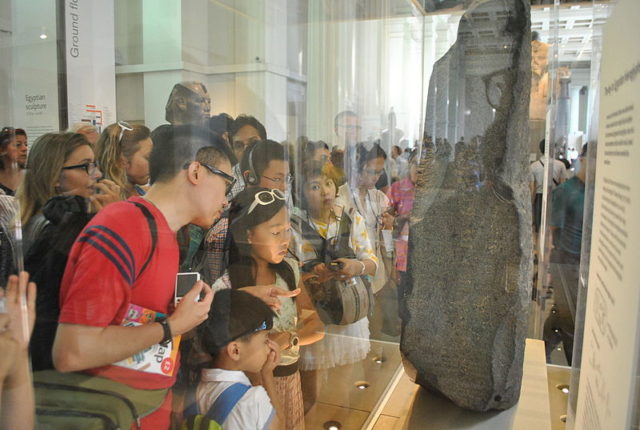
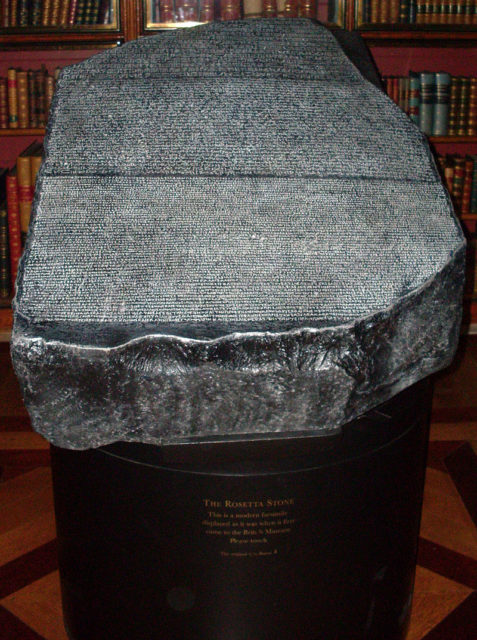
Scholars began their analyses with the Rosetta Stone’s Ancient Greek text since the language was widely known to scholars. Stephen Weston verbally presented an English translation of the Ancient Greek text in April 1802 at a Society of Antiquaries meeting. Librarian and antiquarian Gabriel de La Porte du Thei worked on a translation of the Ancient Greek text as well, but he left his unfinished work for his colleague Hubert-Pascal Ameilhon, who first published translations in both Latin and French in 1803.
Richard Porson at Cambridge University produced a suggested reconstruction of the missing text on the Stone’s bottom right corner. Meanwhile, classical historians worked from a print of the Stone’s text and released a translation of the Ancient Greek text that was more reliable than Ameilhon’s original version. It was published in the Society of Antiquaries’ Journal Archeologica alongside Stephen Weston’s English translation in 1811.
Translating the middle portion of the Stone’s Demotic text proved a bit more challenging for scholars. Swedish diplomat and scholar Johan David Åkerblad used his own research on the Coptic language and script to work together with French scholar Antoine-Isaac Silvestre de Sacy in translating the Demotic inscriptions, since the languages appeared to be related.

They managed to identify names in the text and an alphabet of 29 letters deciphered from the Greek names in the Demotic text. By 1802 de Sacy quit his work on the Stone, still unable to identify the remaining characters and symbols in the text. His final contribution to the translations of the Stone’s inscriptions happened in 1811 when he suggested that scholar Thomas Young of the Royal Society of London use as a basis what Georg Zoëga had once theorized. He had been working on the premise that the proper names in the Ancient Egyptian hieroglyphics were written phonetically, and that by looking for Greek names scholars may be able to identify some of the possible phonetic characters in the hieroglyphics.
Thomas Young corresponded regarding the Stone with a teacher from Grenoble, France, named Jean-François Champollion. Champollion had seen copies of Ancient Greek and hieroglyphic inscriptions on the Philae obelisk in 1822; William John Banks had discovered the names Ptolemaios and Kleopatra on the obelisk.
Champollion used Banks’s work to identify the phonetic characters k l e o p a t r a and employed this along with the names on the Rosetta Stone to create an alphabet of phonetic hieroglyphic characters. This proved to be a huge breakthrough in the reading of hieroglyphics, and Champollion noted that similar phonetic characters were seen in Greek and Ancient Egyptian names. Champollion went on to use many other texts besides the inscriptions on the Rosetta Stone to create an Ancient Egyptian grammar and hieroglyphic dictionary that was published in 1832 after Champollion died.
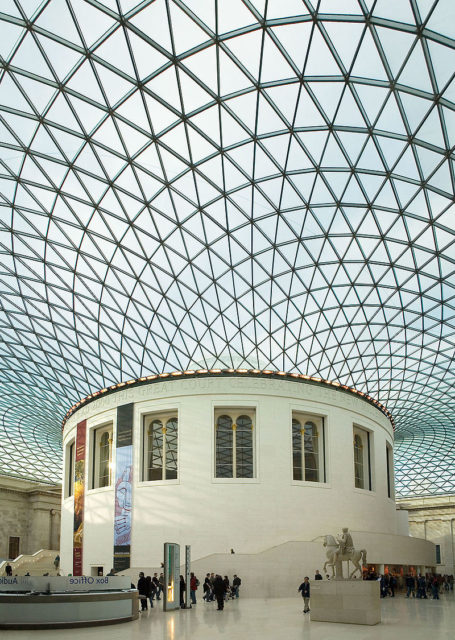
Now that the Stone’s three texts had been analyzed and the languages identified, scholars worked to understand the texts more completely by comparing them with each other. Champollion was still working on translating the Stone’s texts in 1824 when classical scholar Antoine-Jean Letronne vowed to prepare a translation of the Stone’s Greek text for Champollion’s use. In exchange for this, Champollion promised to analyze the ways in which the three Rosetta Stone inscriptions were different. When Champollion died in 1832, his analysis was thought to be lost, and Letronne could not continue his own work on the Stone.
After Champollion’s assistant François Salvolini died in 1838, Champollion’s analysis was found among his papers. It was then discovered that Salvolini’s 1837 published work on the Stone was plagiarism. With Champollion’s analysis found, Antoine-Jean Letronne could finish his work on the Stone’s Greek text and his French translation of it, and this was published in 1841. German Egyptologists Heinrich Brugsch and Max Uhlemann published revised Latin translations based on the demotic and hieroglyphic texts, and the first English translation of the Stone’s texts appeared in 1858, completed by members of the Philomathean Society at the University of Pennsylvania. An authoritative work on the Rosetta Stone written by British Museum curator E. A. Wallis Budge appeared in 1904.
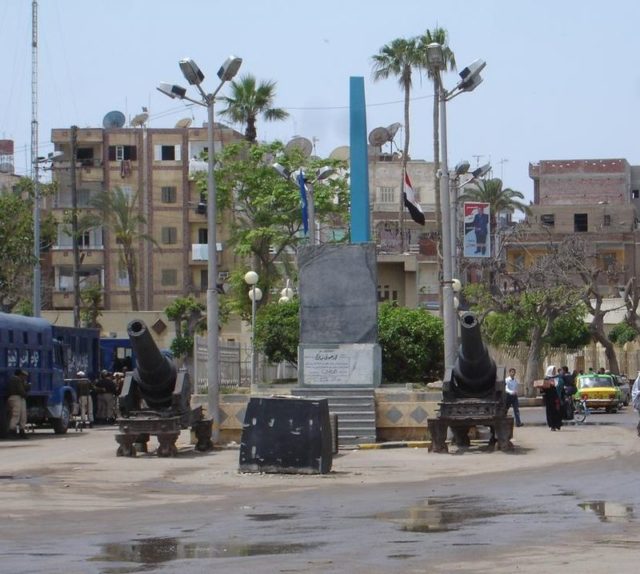
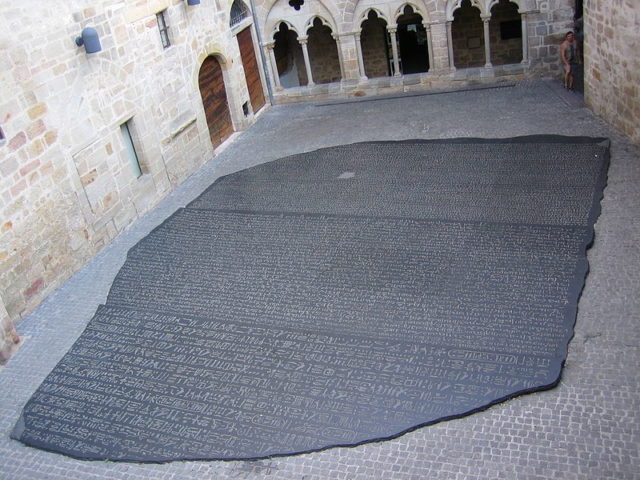
There is no singular definitive translation in English of the Rosetta Stone text due to differences in the three original inscriptions and also because modern scholars are still learning new things about ancient languages. The most recent translation by R.S. Simpson is based on the Demotic text and appears on the British Museum’s website. In addition, the Rosetta Stone is now no longer the only known version of the decree by Ptolemy V.
Two versions of the decree have been unearthed since the rediscovery of the Rosetta Stone – the Nubayrah Stele and the Philae obelisk. There are also two rediscovered earlier Ancient Egyptian bilingual or trilingual inscriptions that predate the Rosetta Stone – the Decree of Canopus from 238 BCE and the Memphis decree of Ptolemy IV from 218 BC. However, the Rosetta Stone was instrumental in providing the fundamental understandings of Ancient Egyptian language and civilization. As such, the term “Rosetta Stone” is widely used as a name for a clue that proves essential to gaining new knowledge in a given field.
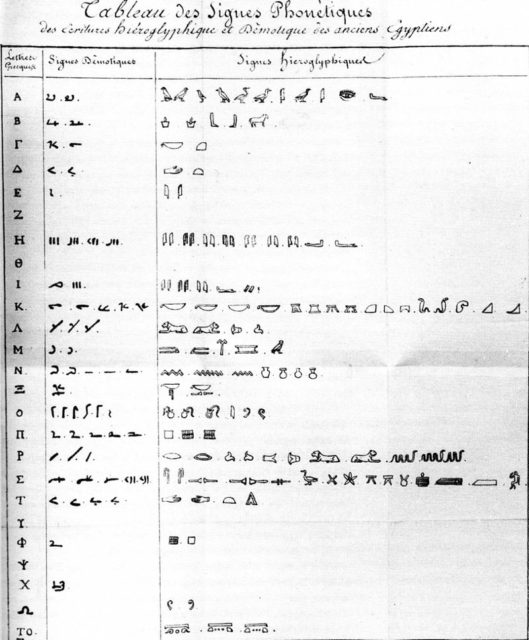
Currently, the Rosetta Stone’s mysteries have all but been solved, yet there is still conflict about its placement. Since 2003, Egypt has requested that the British Museum return the Rosetta Stone to its native land. It was later added to a list of key Egyptian artifacts that reside in museums outside of Egypt that the country would like returned, including the bust of Nefertiti, a statue of the Great Pyramid architect Hemiunu, the Dendara Temple Zodiac, and the bust of Ankhhaf.
Read another story from us: 6 Great archaeological discoveries that were found by accident
The British Museum refused to return the original Rosetta Stone but gave Egypt a full-sized reproduction. Egypt countered by asking for a loan of the original Stone to Egyptian museums as recently as 2013, but the British Museum has declined.
